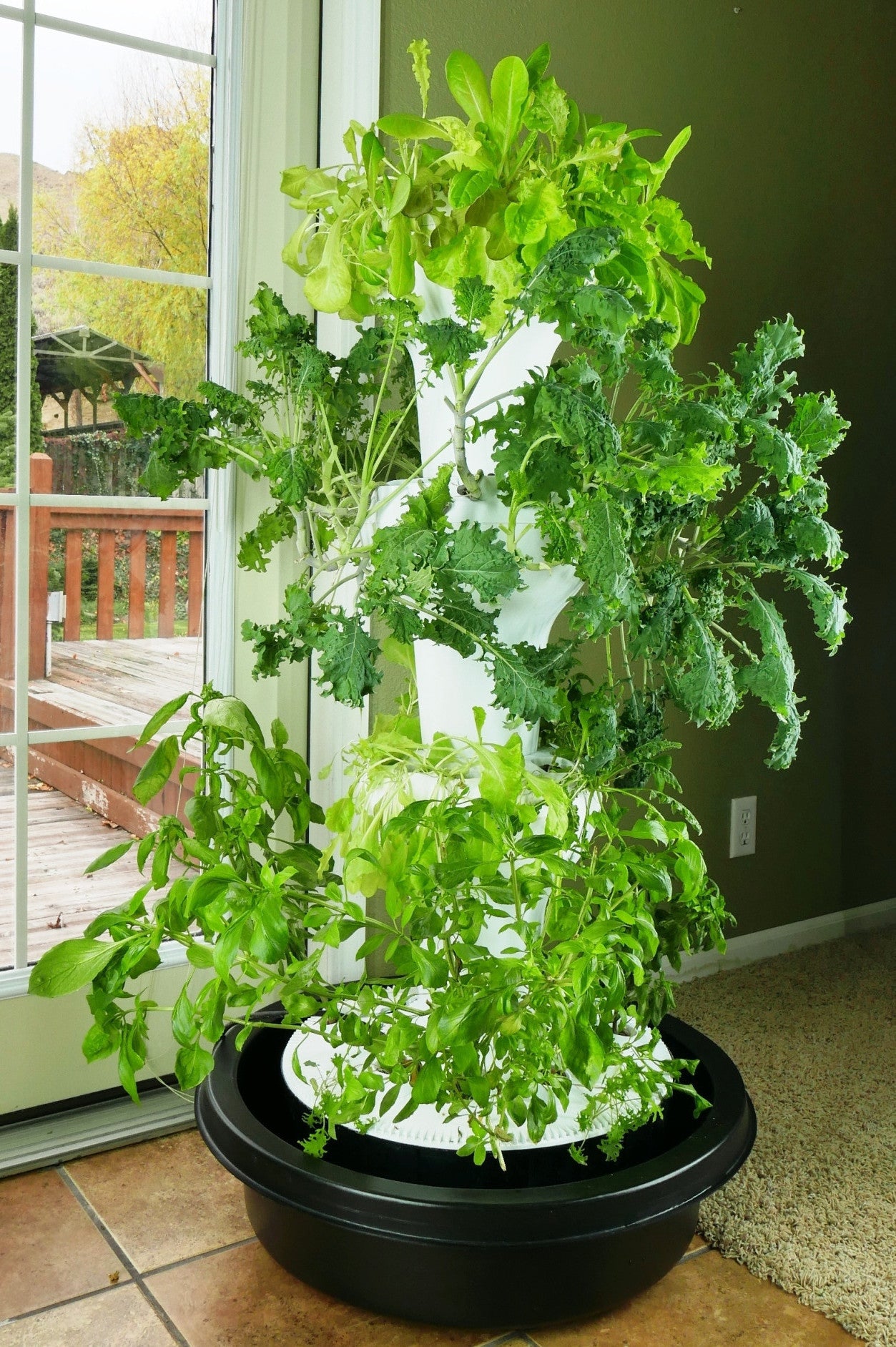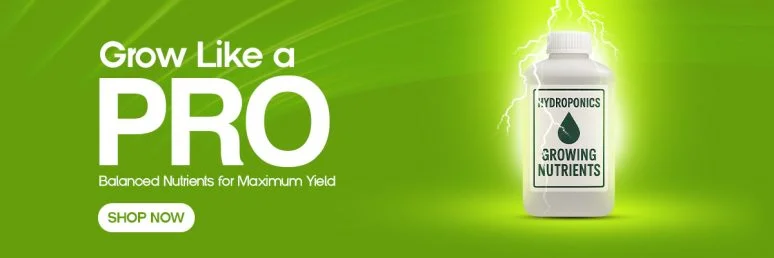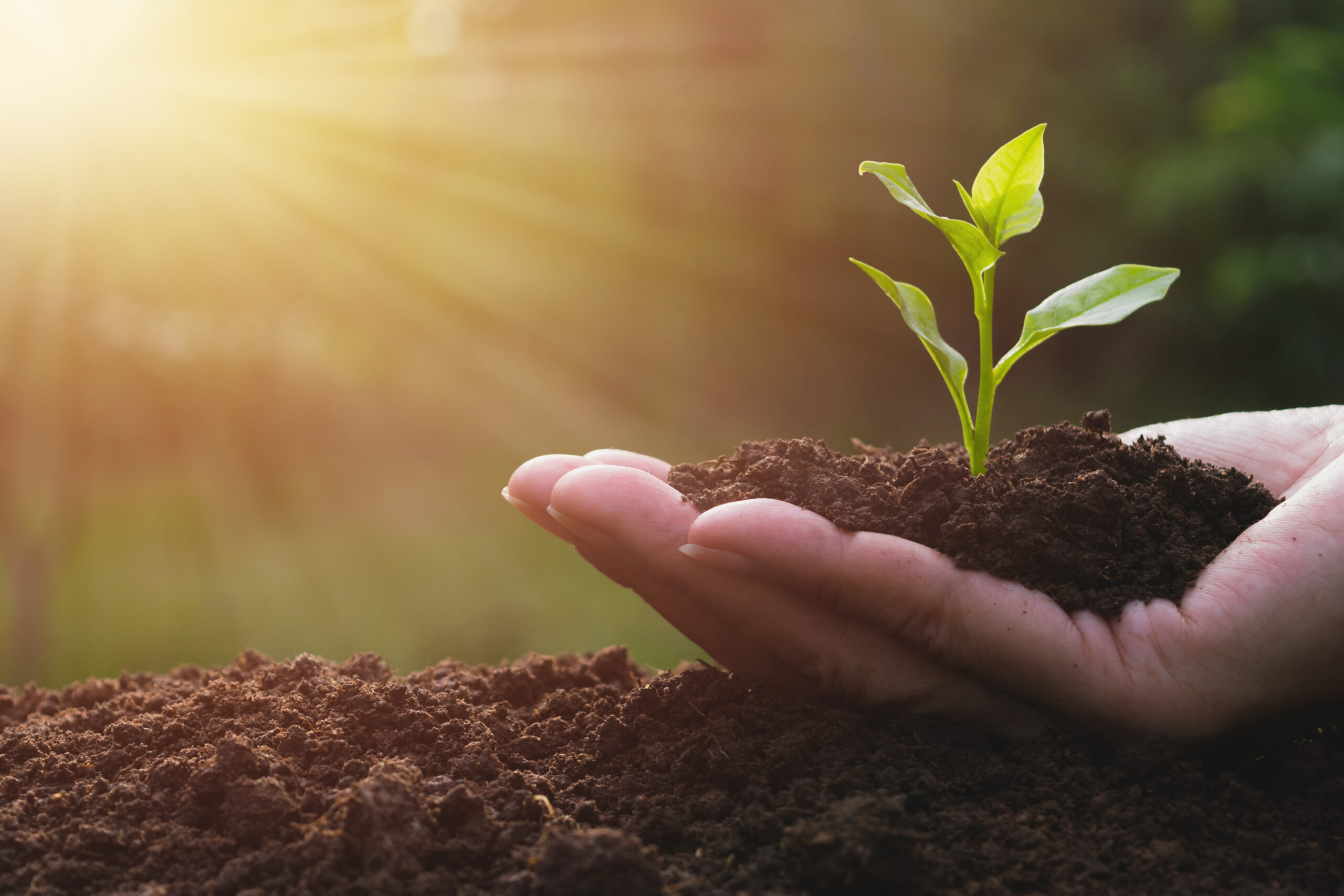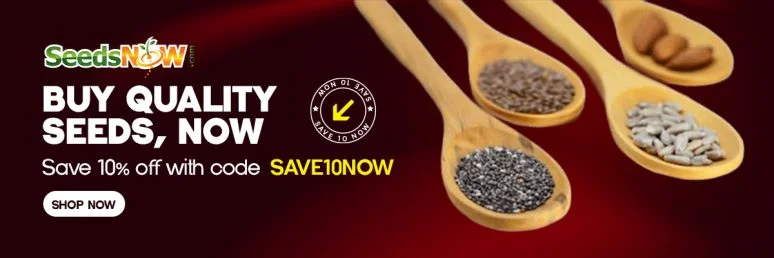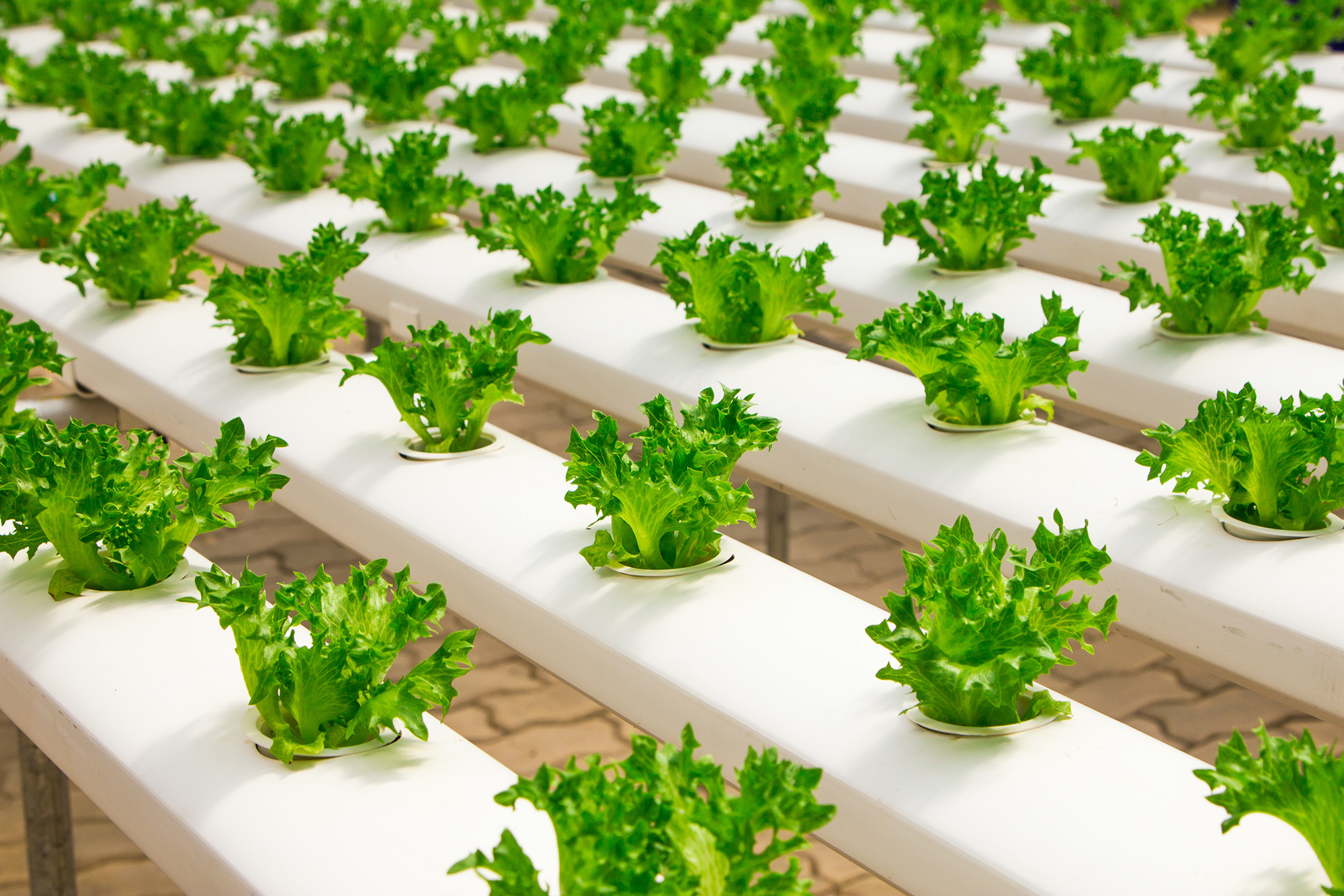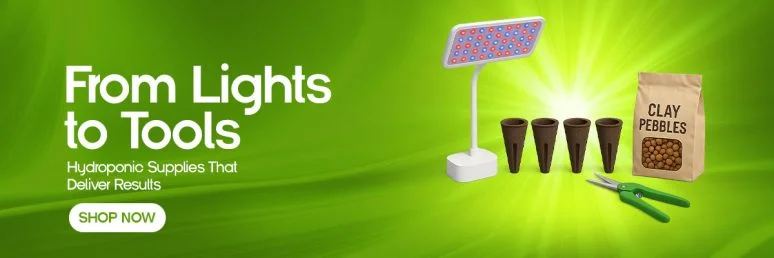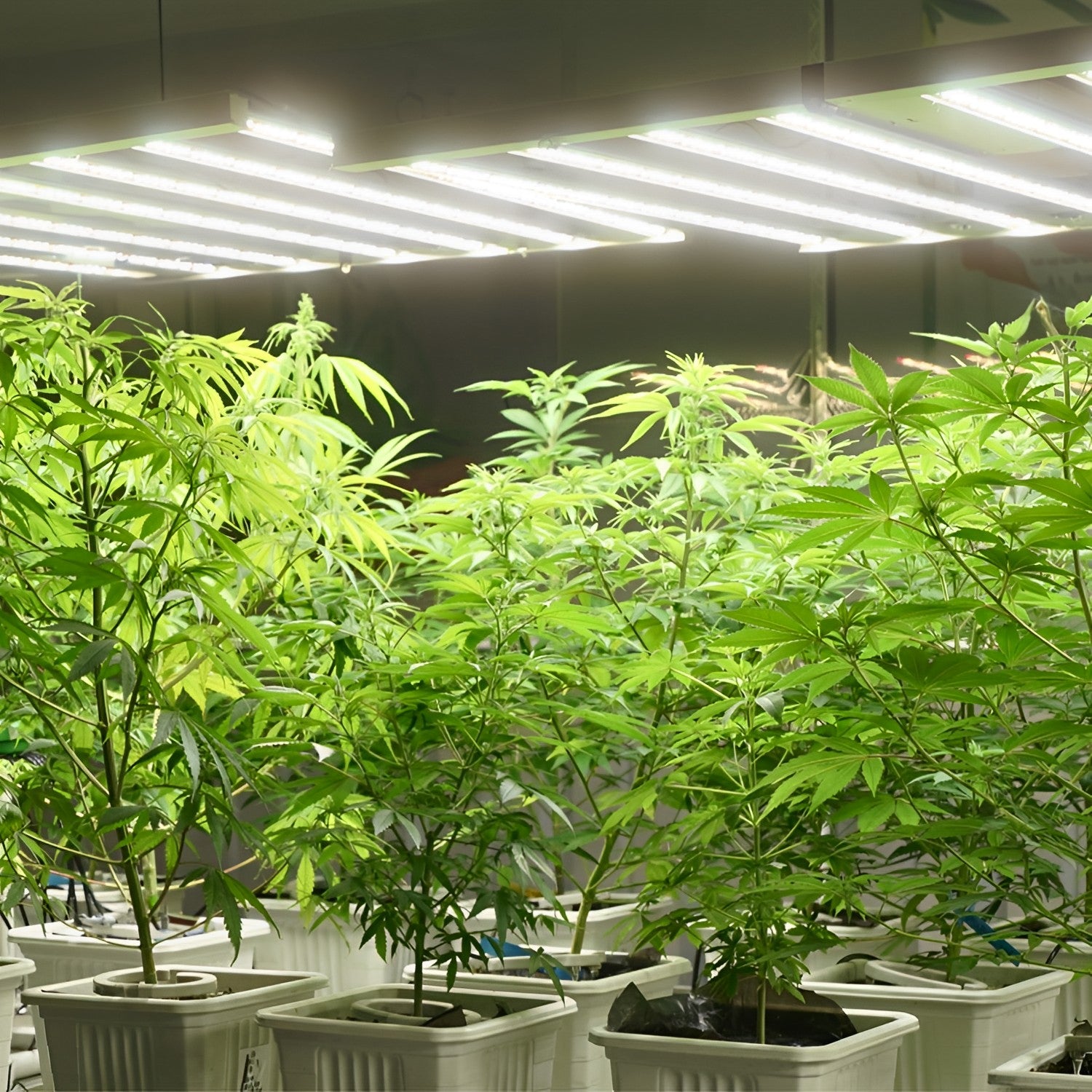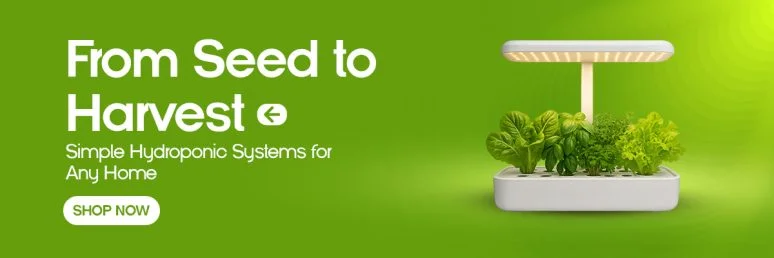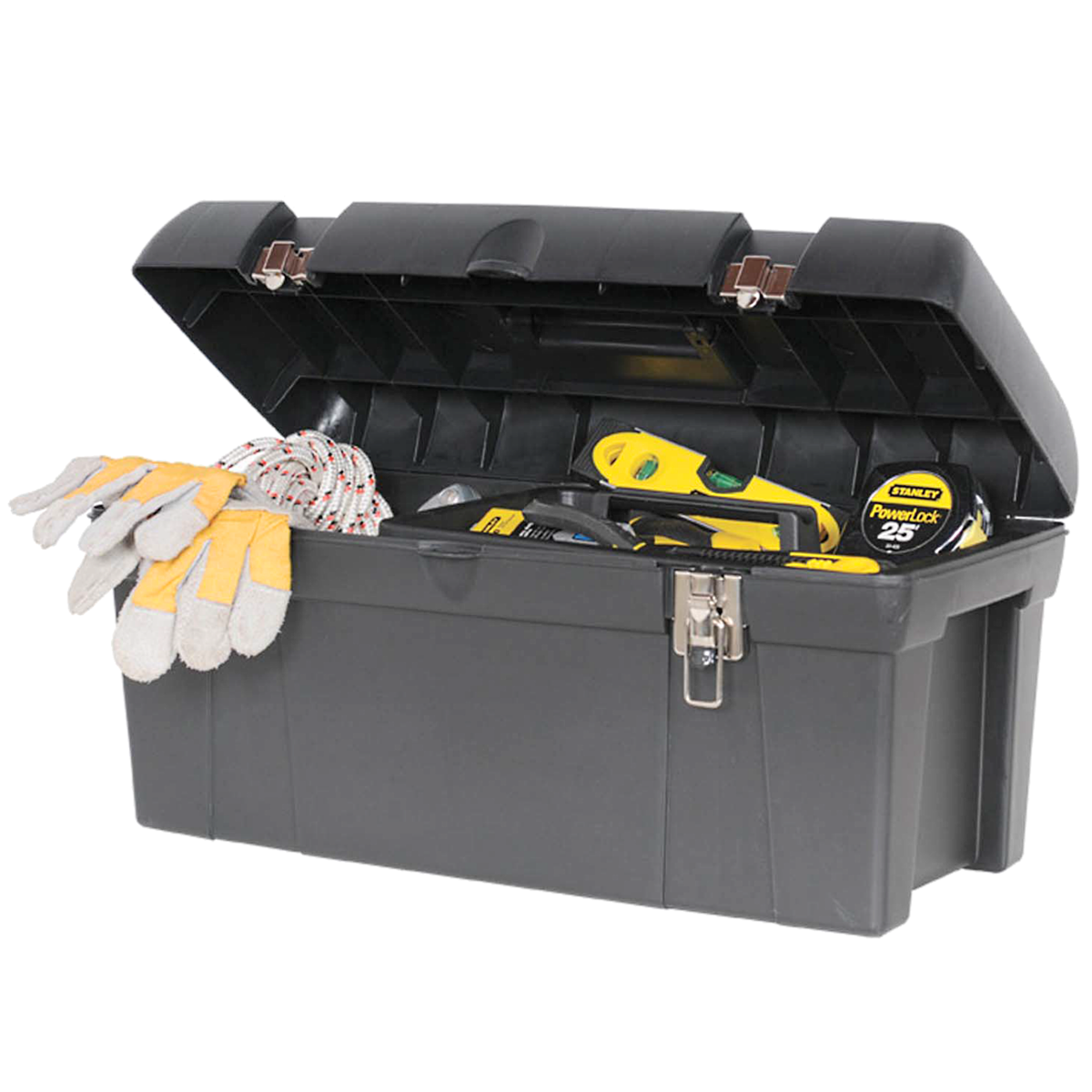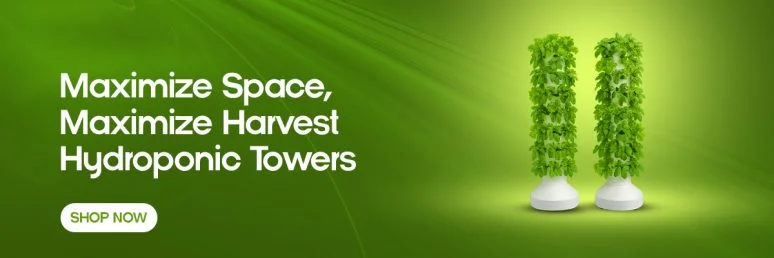What are the 7 Requirements Of A Hydroponic System?

Key Takeaways
- A successful hydroponic system requires seven essential components: growing medium, nutrient solution, water quality management, delivery system, lighting, environmental controls, and monitoring tools.
- The right growing medium supports your plants while allowing oxygen and nutrient solution to reach the roots efficiently.
- Nutrient solutions must be precisely formulated with proper EC, pH levels, and both macro and micronutrients for optimal plant growth.
- Water quality forms the foundation of your hydroponic system, with parameters like pH, temperature, and dissolved oxygen being critical to success.
- GrowGeneration offers comprehensive solutions for hydroponic gardeners at all experience levels, from beginner setups to advanced commercial systems.
Hydroponic gardening represents the perfect marriage of technology and nature, allowing plants to thrive without soil. By providing nutrients directly to plant roots in a water-based solution, hydroponic systems create ideal growing conditions that can accelerate growth by up to 25% while using 90% less water than traditional gardening. GrowGeneration has been at the forefront of helping gardeners transition to this efficient growing method by providing the essential components needed for success.
Whether you’re a curious beginner or an experienced gardener looking to maximize yields, understanding the seven core requirements of any hydroponic system will set you up for success. Each component works in harmony to create an optimized growing environment that puts you in complete control of your garden’s destiny.
The 7 Essential Requirements Every Hydroponic System Must Have
Creating a thriving hydroponic garden requires attention to seven fundamental components. Each element serves a critical function in supporting plant growth, and overlooking any single requirement can lead to poor results or system failure. Let’s explore what makes these seven components the backbone of successful hydroponic gardening.
Growing Medium: The Foundation of Your Hydroponic Garden
“Foody 12 Hydroponic System | Foody …” from foodyverticalgarden.com and used with no modifications.
Unlike traditional soil gardening, hydroponic systems rely on inert growing mediums that provide physical support for plants while allowing roots to access water, nutrients, and oxygen. The ideal growing medium offers excellent drainage, adequate aeration, and structural stability without decomposing or altering the nutrient solution. Your choice of medium will significantly impact root development, nutrient uptake, and overall plant health.
Popular Growing Medium Options
Choosing the right growing medium depends on your specific hydroponic system, plant varieties, and personal preferences. Rockwool, a spun mineral fiber material, remains an industry standard due to its exceptional water retention properties while maintaining air pockets crucial for root oxygenation. For beginners, expanded clay pebbles (LECA) offer an excellent entry point with their reusable nature, excellent drainage, and forgiving properties if you occasionally overwater.
Coconut coir has gained popularity as an eco-friendly alternative to rockwool, providing similar water retention capabilities while being biodegradable and renewable. Perlite and vermiculite serve well in mixed media applications, with perlite excelling in aeration and vermiculite in moisture retention. For systems with frequent flooding cycles, lightweight expanded clay aggregate (LECA) provides stability and excellent drainage while maintaining beneficial air pockets around the root zone.
- Rockwool: Excellent water retention with superior aeration properties
- Coconut coir: Eco-friendly with balanced water retention and aeration
- Expanded clay pebbles: Reusable, provides excellent drainage and root support
- Perlite: Lightweight with superior aeration properties
- Vermiculite: High water retention capabilities
How to Choose the Right Medium for Your Plants
Selecting the appropriate growing medium requires considering your specific hydroponic system type, plant varieties, and maintenance preferences. For systems with frequent flooding cycles like ebb and flow, choose mediums with excellent drainage like LECA or a perlite/vermiculite mix. Deep water culture systems benefit from net pots filled with clay pebbles that allow roots to extend into nutrient solution while providing stabilization for top-heavy plants.
Consider the growth stage of your plants when selecting a medium. Seedlings and cuttings thrive in finer materials like rockwool cubes that retain moisture consistently, while established plants often perform better with coarser mediums that encourage robust root development. Also factor in your watering frequency and system automation level—some mediums dry out quickly and require more frequent irrigation, while others retain moisture for extended periods, making them suitable for gardeners with limited time for maintenance.
Common Growing Medium Mistakes to Avoid
The most frequent mistake new hydroponic gardeners make is using garden soil or potting mix in their systems. These materials compact around roots, harbor pathogens, and release organic compounds that can disrupt nutrient balance and clog pumps and irrigation lines. Another common error is failing to properly prepare certain growing mediums before use—rockwool requires soaking and pH adjustment, while coconut coir needs thorough rinsing to remove salt residues.
Overlooking the expansion properties of some mediums can also create problems. Coconut coir, for instance, can expand up to eight times its compressed volume when hydrated, potentially overflowing containers if not accounted for during setup. Many beginners also misjudge water retention characteristics, either drowning roots by using mediums that hold too much water or stressing plants with mediums that dry too quickly for their irrigation schedule.
Finally, reusing growing mediums without proper sterilization between crops can transfer diseases and pests to new plants. While materials like clay pebbles can be cleaned and reused, others like rockwool are best used for a single growing cycle to maintain optimal sanitation standards and prevent pathogen buildup that could compromise your entire system.
Nutrient Solution: Feeding Your Plants Without Soil
“Grow healthier plants by improving your …” from tagawagardens.com and used with no modifications.
The nutrient solution is the lifeblood of any hydroponic system, delivering all essential elements plants need to grow and thrive. Unlike soil gardening where plants forage for nutrients, hydroponics puts you in complete control of nutrient delivery. Creating the perfect nutrient solution requires understanding plant needs at different growth stages and maintaining precise concentrations for optimal results. For more insights, check out these tips for a successful hydroponic growing operation.
Essential Macro and Micronutrients Your Plants Need
Plants require two categories of nutrients: macronutrients needed in large quantities and micronutrients required in trace amounts. The primary macronutrients—nitrogen (N), phosphorus (P), and potassium (K)—drive vegetative growth, root development, and flowering/fruiting respectively. Secondary macronutrients including calcium, magnesium, and sulfur support structural integrity, chlorophyll production, and protein synthesis.
Micronutrients such as iron, manganese, zinc, copper, molybdenum, boron, and chlorine are needed in minute quantities but are absolutely essential for enzyme activation, photosynthesis, and metabolic functions. The beauty of hydroponic nutrient solutions is that they deliver these elements in readily available ionic forms, eliminating the waiting period typical in soil as organic matter breaks down.
- Macronutrients: Nitrogen (N), Phosphorus (P), Potassium (K), Calcium (Ca), Magnesium (Mg), Sulfur (S)
- Micronutrients: Iron (Fe), Manganese (Mn), Zinc (Zn), Copper (Cu), Boron (B), Molybdenum (Mo), Chlorine (Cl)
Pre-Mixed vs. Custom Nutrient Solutions
For beginners, pre-formulated nutrient concentrates offer convenience and reliability, typically coming as two-part solutions to prevent precipitation of certain elements when stored. These products often include complete feeding schedules based on plant type and growth stage, eliminating guesswork and providing consistent results. Many commercial growers rely on these ready-to-use formulations to ensure standardized production cycles and predictable harvests.
Advanced gardeners may prefer creating custom nutrient solutions tailored to specific plant varieties, growth stages, or water conditions. Custom formulations allow precise control over individual elements, enabling targeted adjustments to address plant-specific needs or deficiency symptoms. This approach requires deeper knowledge of plant nutrition and access to testing equipment, but offers the flexibility to optimize growth for particular crops or adapt to changing environmental conditions throughout the growing cycle.
Maintaining Proper Solution Concentration
The concentration of your nutrient solution, measured by electrical conductivity (EC) or total dissolved solids (TDS), directly impacts plant health and productivity. Too dilute, and plants starve for essential elements; too concentrated, and they suffer nutrient burn or struggle to absorb water through osmotic pressure. Most hydroponic crops thrive within EC ranges of 1.2-2.4 mS/cm, though specific requirements vary by plant type and growth stage.
Solution pH critically affects nutrient availability by influencing the solubility and plant uptake of different elements. Most hydroponic plants perform best with slightly acidic solutions between 5.5-6.5 pH, where maximum availability occurs for most essential nutrients. Regular testing and adjustment of both EC and pH are non-negotiable maintenance tasks, with frequency depending on system size, plant density, and environmental conditions.
Signs of Nutrient Deficiencies and How to Fix Them
Recognizing nutrient deficiencies early allows for prompt correction before plant health deteriorates significantly. Yellow leaves with green veins often indicate iron deficiency, while purple stems and leaf undersides typically signal phosphorus shortage. Calcium deficiency appears as distorted new growth and brown leaf edges, while nitrogen-starved plants show overall yellowing beginning with older leaves.
Correction strategies depend on the specific deficiency and underlying cause. Simple deficiencies may require only adding the lacking nutrient, while pH-induced availability issues necessitate adjusting solution pH to unlock nutrients already present. When diagnosing problems, consider that similar symptoms can have different causes—for example, both magnesium deficiency and potassium excess can cause interveinal chlorosis. Take a systematic approach by checking pH and EC first before adding supplements, as maintaining proper nutrient balance is often more important than boosting individual elements.
Water Quality and Reservoir System
“All plants need water. But how much and …” from woodlandswater.org and used with no modifications.
Water quality forms the foundation of hydroponic success, as it directly impacts nutrient availability, pH stability, and plant health. Your starting water—whether tap, well, rainwater, or filtered—contributes its own unique chemical profile that will influence how your nutrient solution performs. Understanding water basics helps avoid common pitfalls that can lead to stunted growth, deficiencies, or system failure.
Ideal Water Parameters for Hydroponic Success
Beyond pH and EC, several other water parameters impact hydroponic performance. Dissolved oxygen levels, ideally maintained above 5 mg/L, ensure robust root respiration and prevent root diseases common in oxygen-poor environments. Water temperature significantly affects oxygen solubility and nutrient uptake, with most plants performing best between 65-75°F (18-24°C). Temperatures above 80°F (27°C) reduce oxygen capacity and can promote pathogen growth, while excessively cool solutions slow metabolism and nutrient absorption.
Water hardness, measured by calcium and magnesium content, influences how your nutrient solution behaves over time. Very soft water (under 50 ppm hardness) often experiences rapid pH fluctuations, while very hard water (above 200 ppm) may contain excessive levels of certain minerals that compete with nutrient uptake. Chlorine and chloramine, common municipal water additives, can harm beneficial microorganisms in organic hydroponic systems and should be removed through carbon filtration or 24-hour aeration before use.
Optimal Water Parameters for Hydroponics
pH: 5.5-6.5
EC: 1.2-2.4 mS/cm (crop dependent)
Dissolved Oxygen: >5 mg/L
Temperature: 65-75°F (18-24°C)
Hardness: 80-150 ppm (moderate)
Chlorine: 0 ppm (removed)
Reservoir Size and Material Considerations
Your reservoir size should accommodate your plant count while providing stability against rapid parameter changes. As a rule of thumb, allow at least 1-2 gallons of nutrient solution per mature plant, with larger volumes creating more stable systems less prone to temperature swings or concentration fluctuations. Larger reservoirs dilute the impact of evaporation and nutrient uptake, requiring less frequent adjustment but more solution when complete changes are necessary.
Reservoir material significantly impacts solution quality and system longevity. Food-grade plastic containers (HDPE or polypropylene) offer durability without leaching harmful compounds into your solution. Avoid containers previously used for toxic substances, as plastics can absorb and gradually release these compounds. Light-proof reservoirs prevent algae growth, while insulated options help maintain stable solution temperatures. Consider accessibility for testing, adjusting, and cleaning when selecting reservoir shape and location, as regular maintenance remains essential regardless of system size or sophistication.
Water Temperature Control Techniques
Maintaining optimal water temperature presents challenges in different seasons and environments. During hot periods, consider submersible chillers for precise control in larger systems, or frozen water bottles rotated through smaller reservoirs as a budget-friendly alternative. Positioning reservoirs below growing areas utilizes natural cooling as water returns from the higher growing zone, while keeping reservoirs out of direct sunlight prevents heat buildup.
Cold environments may require aquarium heaters with thermostatic control to maintain minimum temperatures, particularly important for tropical plants with poor cold tolerance. Insulating reservoirs with reflective bubble wrap or foam panels creates temperature stability in both hot and cold conditions. Remember that water temperature affects dissolved oxygen levels—cooler water holds more oxygen but slows nutrient uptake, requiring a balanced approach appropriate for your specific crops and growing environment.
Delivery System: Getting Nutrients to Your Plants
“Overview of Commercial Hydroponic Systems” from www.globalgarden.co and used with no modifications.
The delivery system transports nutrient solution from the reservoir to your plants’ root zones with precise timing and volume. This crucial component determines how efficiently your plants access water, nutrients, and oxygen—the three pillars of hydroponic growth. The ideal delivery system maintains consistent moisture levels without waterlogging roots, creating the perfect balance for robust growth.
Types of Hydroponic Systems and Their Delivery Methods
Each hydroponic system type features a unique delivery method designed for specific growing scenarios. Deep Water Culture (DWC) systems suspend plant roots directly in oxygenated nutrient solution, eliminating the need for complex distribution while requiring robust aeration to prevent root suffocation. Nutrient Film Technique (NFT) creates a shallow, continuous flow of solution along channel bottoms, exposing upper root zones to air while lower portions access nutrients.
Ebb and flow (flood and drain) systems periodically flood growing chambers with solution before draining back to the reservoir, creating natural oxygenation cycles that mimic tidal patterns. Drip irrigation delivers precise amounts of solution to individual plants through emitters, offering exceptional control for mixed plantings with varying water needs. Aeroponic systems represent the most technical approach, using high-pressure misting to spray roots suspended in air, maximizing oxygen exposure while minimizing water usage.
- Deep Water Culture: Roots suspended directly in oxygenated solution
- Nutrient Film Technique: Continuous shallow flow along growing channels
- Ebb and Flow: Periodic flooding and draining cycles
- Drip Irrigation: Individual delivery to plant root zones
- Aeroponics: High-pressure misting of suspended roots
Pump Selection and Maintenance
Selecting the appropriate pump size is critical for system performance. Underpowered pumps create insufficient flow rates that lead to stagnant conditions and nutrient “dead zones,” while oversized pumps waste energy and can physically stress delicate root systems. Calculate your required flow rate based on system volume, elevation changes (head height), and desired cycling frequency. Most small to medium hydroponic systems operate effectively with pumps in the 250-800 gallons per hour range, adjusted to match specific delivery methods.
Regular pump maintenance prevents system failures and extends equipment life. Schedule monthly cleaning to remove mineral buildup and debris that can impair performance or cause burnout. Check intake filters weekly to ensure unrestricted flow, and inspect all connection points for leaks or wear. Keep backup pumps available for critical systems, as pump failure can quickly lead to crop stress or loss if not addressed promptly.
Creating Proper Water Flow Patterns
Optimal water flow distributes nutrients evenly while preventing channeling or stagnation. In NFT systems, maintain a gentle flow rate of 1-2 liters per minute with a thin film (2-3mm depth) covering channel bottoms. For ebb and flow setups, complete flood cycles should occur within 5-10 minutes, with draining completed in similar timeframes to prevent oxygen deprivation. DWC systems require gentle circulation that moves solution without creating excessive turbulence that could damage roots.
Strategic placement of delivery and return lines ensures comprehensive coverage throughout your growing area. Position inflow points to create circular patterns that reach all plants before returning to the reservoir. For larger systems, consider multiple delivery zones that can be independently controlled to accommodate different plant types or growth stages. Monitor flow patterns regularly, as root growth and media settling can create obstructions that redirect water in unintended ways, potentially leaving some plants undernourished.
Light Sources: Powering Plant Growth
“LED Grow Light, 200W, 5000K Full …” from sunco.com and used with no modifications.
Light drives photosynthesis, the fundamental process that converts nutrients into plant tissue. In hydroponic systems, especially indoor setups, providing the right quantity, quality, and duration of light often determines success or failure. Your lighting solution must balance intensity, spectrum, coverage, and energy efficiency to create optimal growing conditions. For more tips on enhancing your hydroponic setup, check out these 7 tips for a successful hydroponic growing operation.
Natural vs. Artificial Lighting Options
Natural sunlight provides the perfect spectrum for plant growth, making greenhouse or window-adjacent systems excellent choices where available. Sunlight delivers full-spectrum illumination that artificial lights struggle to match, with intensity that penetrates deeply into plant canopies. However, natural light comes with limitations—seasonal variations, unpredictable weather patterns, and day length fluctuations can disrupt growing cycles or limit year-round production.
Artificial lighting overcomes these limitations by providing consistent illumination regardless of external conditions. LED technology has revolutionized indoor growing, offering customizable spectrums, reduced heat output, and energy efficiency that makes year-round cultivation economically viable. Traditional options like high-pressure sodium (HPS) and metal halide (MH) lights still serve specific purposes, with HPS excelling during flowering phases and MH providing excellent vegetative growth spectrum, though both generate significant heat requiring additional ventilation.
Light Intensity, Duration, and Spectrum Requirements
Light intensity requirements vary significantly between plant types, with leafy greens thriving under 200-400 μmol/m²/s PPFD (Photosynthetic Photon Flux Density), while fruiting plants like tomatoes and peppers demand 600-900 μmol/m²/s for optimal production. Duration should match plant photoperiod requirements—typically 14-18 hours for vegetative growth and 10-12 hours for flowering/fruiting species. Providing darkness periods is equally important, as many plant processes including respiration and certain growth hormones activate primarily during dark cycles.
Spectrum composition significantly impacts plant development. Blue wavelengths (400-500nm) promote compact, leafy growth ideal for herbs and greens, while red wavelengths (600-700nm) stimulate flowering and fruiting. Full-spectrum lighting incorporating both ranges plus intermediate wavelengths creates balanced growth. Consider including UV (ultraviolet) and FR (far-red) portions for specific benefits like increased oil production in herbs or improved germination rates in certain species. For more tips on successful hydroponic growth, check out these 7 tips for a successful hydroponic growing operation.
Positioning Lights for Maximum Coverage
Proper light positioning ensures uniform coverage across your growing area while maximizing energy efficiency. Maintain recommended hanging heights—typically 12-36 inches above plant canopies depending on light type and intensity—to prevent light burn while providing adequate penetration. Reflective surfaces on walls, or dedicated reflectors on fixtures, redirect light that would otherwise be wasted, increasing effective intensity without additional energy consumption. For more tips, check out these tips for a successful hydroponic growing operation.
For larger growing areas, create overlapping light patterns that eliminate dark spots where plants might stretch or develop unevenly. Track light coverage using PAR (Photosynthetically Active Radiation) meters to identify and correct uneven distribution. Consider adjustable mounting systems that allow height modifications as plants grow, maintaining optimal distance throughout development stages.
Energy-Efficient Lighting Solutions
Energy costs often represent the largest operational expense in indoor hydroponic systems, making efficiency crucial for sustainable operation. Modern LED fixtures offer the highest efficiency ratings, converting up to 50% of electricity into usable plant light compared to 30% for HPS and even lower for fluorescent options. Look for fixtures with high PPE (Photosynthetic Photon Efficacy) ratings, which measure light output per watt consumed—leading commercial LEDs now exceed 2.5 μmol/J.
Implement lighting schedules that take advantage of off-peak electricity rates where available, potentially shifting dark periods to coincide with higher-cost daytime hours. Consider smart controllers that gradually increase and decrease intensity during simulated dawn and dusk periods, reducing energy use while potentially improving plant responses. For supplemental greenhouse lighting, light sensors can activate artificial sources only when natural light falls below threshold levels, maximizing natural light use while ensuring consistent plant exposure.
Environmental Controls for Optimal Growth
“Hydroponic Systems For Sale | Complete …” from www.hydroponicschina.com and used with no modifications.
Environmental factors beyond nutrition and lighting significantly impact plant health and productivity in hydroponic systems. Temperature, humidity, air movement, and CO₂ levels all interact to create either ideal growing conditions or stress-inducing challenges. Controlling these variables allows you to optimize photosynthesis rates, nutrient uptake efficiency, and overall plant vigor.
Temperature Management Techniques
Maintain growing area temperatures between 65-80°F (18-27°C) for most hydroponic crops, with slight variations based on specific plant preferences. Day/night temperature differentials of 5-10°F can benefit many species, triggering important metabolic processes that enhance flavor development and structural integrity. Avoid rapid temperature fluctuations that stress plants and potentially trigger bolting or other undesirable responses.
Heating options range from basic space heaters with thermostatic control to sophisticated radiant floor systems that provide even, gentle warmth. For cooling, consider evaporative coolers in dry climates, while split air conditioning systems offer precise control in humid environments. Heat exchangers can recover thermal energy from lighting fixtures or exhaust air, improving energy efficiency while maintaining target temperatures.
Humidity Control Methods
Different growth stages require specific humidity ranges—seedlings and cuttings thrive in high humidity (70-80% RH), while mature fruiting plants generally prefer moderate levels (50-60% RH) to prevent fungal issues while supporting transpiration. Consistently high humidity above 85% promotes conditions favorable for powdery mildew, botrytis, and other pathogens, while extremely low levels below 30% create drought stress even when roots have adequate moisture.
Humidification can be accomplished through passive evaporation from open water surfaces, dedicated ultrasonic humidifiers, or high-pressure misting systems for larger operations. Dehumidification options include condensing units similar to air conditioners, desiccant-based systems that absorb atmospheric moisture, or simply exhausting humid air while introducing drier replacement air. Consider using humidity controllers with hysteresis settings to prevent rapid cycling of equipment as conditions fluctuate naturally.
Air Circulation and Ventilation Systems
Proper air movement strengthens plant stems, prevents microclimates, and ensures even CO₂ distribution throughout the growing area. Oscillating fans positioned to create gentle but complete canopy movement (visualized as a slight wave motion) develop stronger plants without causing windburn or excessive transpiration. Stratification—where hot air rises and creates temperature layers—can be prevented with vertical air circulation that maintains consistent conditions from floor to ceiling.
Ventilation serves multiple purposes beyond temperature control, removing excess humidity and refreshing CO₂ depleted during photosynthesis. Calculate air exchange rates based on growing area volume, typically targeting complete air replacement every 1-3 minutes during high temperature periods. Consider heat recovery ventilators (HRVs) in extreme climates to retain thermal energy while exchanging air, significantly reducing heating or cooling costs while maintaining optimal growing environments.
Monitoring and Maintenance Tools
“Stanley 26″ Large Tool Box …” from www.tacomascrew.com and used with no modifications.
Successful hydroponic gardening relies on consistent monitoring and proactive maintenance. Without soil to buffer changes, hydroponic environments can shift rapidly, potentially stressing plants before visual symptoms appear. The right monitoring tools detect these changes early, allowing corrective action before crops suffer.
Essential Measurement Instruments
Every hydroponic gardener needs reliable instruments to track critical system parameters. A quality pH meter provides the foundation for nutrient management, with accuracy of ±0.1 essential for maintaining the narrow optimal range of most crops. Electrical conductivity (EC) meters measure total dissolved solids, helping maintain appropriate nutrient concentration without risking deficiencies or toxicities. Temperature probes for both solution and ambient air complete the basic monitoring toolkit, with models that store min/max readings helping identify problematic fluctuations that might occur outside your observation periods.
Beyond these basics, dissolved oxygen meters prove invaluable for water culture systems where root respiration depends entirely on solution oxygenation. Light meters measuring PAR (Photosynthetically Active Radiation) help optimize artificial lighting placement and replacement schedules as bulbs age and output diminishes. For advanced growers, chlorophyll fluorescence meters provide non-destructive measurements of photosynthetic efficiency, offering early detection of plant stress before visible symptoms develop.
- pH meter/drops: Measures acidity/alkalinity (optimal range: 5.5-6.5)
- EC/TDS meter: Measures nutrient concentration
- Thermometers: For solution and ambient temperature
- Dissolved oxygen meter: Measures oxygen in solution
- PAR meter: Measures usable light for photosynthesis
Calibration and maintenance of these instruments ensures their continued accuracy. Schedule regular calibration using reference solutions, typically weekly for frequently used pH meters and monthly for other instruments. Clean probes according to manufacturer specifications, as residue buildup can significantly impact readings and lead to incorrect system adjustments.
Automated Monitoring Systems
Technology has revolutionized hydroponic monitoring through integrated systems that continuously track multiple parameters while providing alerts when measurements drift outside acceptable ranges. Entry-level controllers manage basic functions like irrigation timing and nutrient dosing, while advanced models incorporate wireless sensors, cloud data storage, and smartphone notifications that allow remote management of your system. The investment in automation quickly pays for itself through improved consistency, reduced labor, and the prevention of crop losses that can occur when manual monitoring misses critical changes.
Daily and Weekly Maintenance Checklist
Consistent maintenance routines prevent small issues from developing into system-threatening problems. Daily checks should include visual inspection of plants for pest or disease indicators, verification of proper water levels, and confirmation that all pumps and timers are functioning correctly. Measure and adjust pH and EC levels as needed, recognizing that small, frequent adjustments create more stable conditions than major corrections.
Weekly maintenance expands to include thorough cleaning of filters, clearing any accumulated debris from irrigation lines, and inspecting growing media for signs of algae or salt buildup. Check electrical connections for corrosion in the humid environment typical of hydroponic setups. Prune plants as needed to maintain proper airflow and remove any dead or diseased tissue that could harbor pathogens.
Monthly deep maintenance should address components that degrade more slowly, including pump maintenance, complete reservoir cleaning, and system-wide sanitization to prevent biofilm development in irrigation lines. Replace solution completely rather than continuing to top off with fresh water and nutrients, as this prevents imbalances from selective nutrient uptake over time. Test and recalibrate all monitoring equipment, ensuring continued accuracy as your growing cycle progresses.
Troubleshooting Common System Issues
Even well-maintained systems occasionally develop problems requiring prompt intervention. Root browning often indicates oxygen deficiency from inadequate aeration or excessively warm nutrient solution, remedied by adding air stones, reducing solution temperature, or increasing irrigation frequency in media-based systems. Nutrient lockout—where plants cannot access available nutrients—typically stems from pH imbalance rather than actual nutrient deficiency, highlighting the importance of regular pH monitoring and adjustment.
System leaks require immediate attention to prevent water damage and electrical hazards. Keep appropriate sealants and repair materials on hand, and consider installing water sensors near system components to provide early warning of developing leaks. Electrical issues present particular dangers in water-rich environments—install ground fault circuit interrupters (GFCIs) on all circuits, and immediately address any signs of electrical component corrosion or moisture intrusion to prevent serious safety hazards.
Getting Started: Putting It All Together
Bringing together the seven essential hydroponic requirements creates a harmonious growing system that maximizes plant potential while minimizing resource use. Start by defining your specific goals—whether growing leafy greens for family consumption, cultivating high-value herbs for culinary use, or producing fruiting crops year-round. Your objectives will guide system selection, component sizing, and environmental parameters to create an optimized growing experience tailored to your needs.
Budget-Friendly Starter Systems
Begin your hydroponic journey with simplified systems that incorporate essential requirements without overwhelming complexity or expense. Deep water culture (DWC) systems offer an excellent entry point, requiring only an opaque container, air pump, growing medium, and net pots to create a functional system suitable for leafy greens and herbs. Kratky methods simplify further by eliminating pumps entirely, creating non-circulating systems perfect for small-scale lettuce or herb production with minimal ongoing maintenance requirements.
Scaling Your Hydroponic Setup Over Time
As your experience and confidence grow, expand your system thoughtfully to increase production while maintaining manageability. Modular designs allow incremental expansion without requiring complete system redesign—consider standardized component sizes that facilitate future connections or expansions. Invest in automation progressively, beginning with basic timers for lighting and irrigation before advancing to integrated controllers that manage multiple parameters simultaneously.
Resources for Ongoing Learning
Hydroponic gardening rewards continuous learning and experimentation. Connect with other growers through online forums and local gardening groups where practical experience often provides solutions not found in formal resources. University extension services increasingly offer hydroponic-specific guidance, while dedicated YouTube channels and podcasts deliver current techniques and innovations directly from successful practitioners.
- Online communities: Reddit’s r/Hydro and r/Hydroponics, Facebook groups
- Publications: Maximum Yield, Urban Ag News, Practical Hydroponics
- Courses: University extension programs, online certificates
- Research: NASA’s controlled environment agriculture studies
Document your own growing experiences through photos and detailed notes about system parameters, plant responses, and harvest results. This personal knowledge base becomes increasingly valuable as you identify patterns specific to your environment and plant varieties. Share your successes and challenges with the growing community, as collective knowledge advances the entire field of soil-less cultivation.
Remember that even experienced hydroponic gardeners face occasional challenges—view these as learning opportunities rather than failures. Each growing cycle provides new insights that refine your approach and deepen your understanding of plant needs in controlled environments.
Frequently Asked Questions
As hydroponic gardening continues gaining popularity, newcomers often share common questions about getting started. Understanding these basics helps overcome initial hesitation and builds confidence as you begin your soil-less growing journey. The answers below address the most frequent concerns while providing practical guidance for successful system establishment.
Many beginners worry about the complexity of hydroponic gardening, but starting with basic systems actually simplifies many aspects of traditional gardening. Without soil, you’ll eliminate weeding, reduce watering frequency, and gain precise control over plant nutrition that’s impossible in conventional gardens. Focus on understanding core principles rather than memorizing complicated formulas or procedures—the fundamentals of plant needs remain consistent across all growing methods.
Technical terminology often creates unnecessary barriers to entry for new hydroponic gardeners. Remember that behind the specialized vocabulary lie simple concepts—providing plants with water, nutrients, oxygen, support, and light in controlled ways. Start with simplified explanations that focus on practical applications rather than theoretical details, gradually building your technical knowledge as your experience grows.
- Start small: Begin with a simple system and a few easy plants
- Measure regularly: Check pH and EC at least every other day
- Observe closely: Plants communicate needs through growth patterns and color changes
- Keep records: Document what works and what doesn’t for future reference
Maintain perspective as you begin—even commercial hydroponic operations started as experimental setups with learning curves and occasional setbacks. The seven essential requirements provide a framework for success, but your specific implementation will evolve with experience and observation of how plants respond in your unique environment.
How much does a basic hydroponic system cost to set up?
Initial investment for hydroponic systems varies widely based on size, complexity, and component quality. DIY deep water culture systems can be assembled for as little as $50-100 using readily available components from hardware stores, including containers, air pumps, growing media, and basic nutrients. Commercial kit systems typically range from $150-300 for beginner setups accommodating 4-12 plants, offering simplified assembly with matched components designed to work together seamlessly.
Factor ongoing operational costs into your budget planning. Electricity usage for pumps and lighting represents the largest recurring expense, followed by nutrient solution replacements and periodic growing medium renewal. LED lighting significantly reduces energy consumption compared to older technologies, with the higher initial investment offset by lower operating costs and extended service life. Water testing supplies require regular replenishment, with pH adjustment solutions and calibration fluids needed throughout the growing season.
Can I build a DIY hydroponic system with household items?
Simple DIY Hydroponic Projects
Mason Jar DWC
Materials: Mason jar, net pot lid, air stone, air pump
Perfect for: Herbs, small lettuce
Cost: $15-25PVC NFT Channel
Materials: 4″ PVC pipe, end caps, net pots
Perfect for: Leafy greens, strawberries
Cost: $30-50Storage Tote Ebb & Flow
Materials: Plastic tote, submersible pump, timer, growing media
Perfect for: Mixed plantings, seedling starting
Cost: $40-75
Household containers readily convert to functional hydroponic vessels with minimal modifications. Food-grade plastic containers make excellent reservoirs and growing chambers, while common aquarium supplies provide reliable aeration for deep water culture systems. Standard 5-gallon buckets accommodate larger plants when fitted with net pot lids, creating single-plant deep water culture units that can be connected with simple plumbing parts.
Creative repurposing often produces surprisingly effective growing systems. Rain gutters mounted with slight gradients create functional NFT channels, while plastic storage totes transform into ebb and flow systems with the addition of flood/drain fittings. Even recycled plastic bottles can create vertical growing towers suitable for strawberries or herbs when properly configured for nutrient delivery.
Remember that while structure can be improvised, certain components require proper specifications for plant health. Never substitute untested materials for food-grade plastics in components contacting nutrient solution, as chemical leaching could harm plants or contaminate edible harvests. Similarly, proper pumps, growing media, and nutrients remain essential investments even in otherwise DIY systems.
Which hydroponic system is best for beginners?
Deep Water Culture (DWC) systems offer the ideal entry point for hydroponic beginners, combining simplicity, effectiveness, and affordability. With minimal moving parts—essentially just an air pump and stone in a nutrient-filled reservoir—DWC systems eliminate many potential failure points while still producing excellent results for leafy greens and herbs. The direct root contact with oxygenated nutrient solution promotes rapid growth, while the large water volume creates buffering against sudden parameter changes, providing valuable forgiveness for newcomers still developing monitoring habits.
How often should I change the nutrient solution?
Complete nutrient solution changes typically follow 7-14 day cycles in actively growing systems, with environmental conditions and plant density determining the specific interval. High temperatures accelerate nutrient uptake and water evaporation, potentially concentrating certain elements while depleting others, necessitating more frequent refreshing. Rather than relying solely on calendar scheduling, monitor EC levels daily—rising readings indicate water loss exceeding nutrient uptake, while falling measurements suggest plants are consuming nutrients faster than water, both scenarios warranting adjustment or replacement to maintain proper balance.
What are the most common hydroponic plants for beginners?
Leafy greens consistently rank as the most beginner-friendly hydroponic crops, with butter lettuce, romaine, and arugula thriving in simple systems while offering quick harvests typically within 30-45 days from seedling. These crops forgive minor fluctuations in nutrient concentration and pH while providing satisfying results that encourage continued exploration. Herbs like basil, cilantro, and mint also perform exceptionally well in hydroponic conditions, offering aromatic harvests and continuous production through proper pruning techniques.
As your confidence grows, expand to intermediate crops like strawberries, which produce for extended periods in properly maintained systems, or compact cherry tomato varieties bred specifically for controlled environment production. These fruiting plants require more attention to pollination, structural support, and nutrient balance but reward the additional effort with harvests difficult to achieve in conventional gardens during off-seasons.
Regardless of which plants you choose, selecting varieties specifically developed for hydroponic cultivation significantly improves success rates. These cultivars typically feature compact growth habits, efficient nutrient uptake, and disease resistance traits particularly valuable in the humid environment common to hydroponic systems. Visit GrowGeneration for specialized seeds, supplies, and expert guidance to ensure your hydroponic garden thrives from day one.
